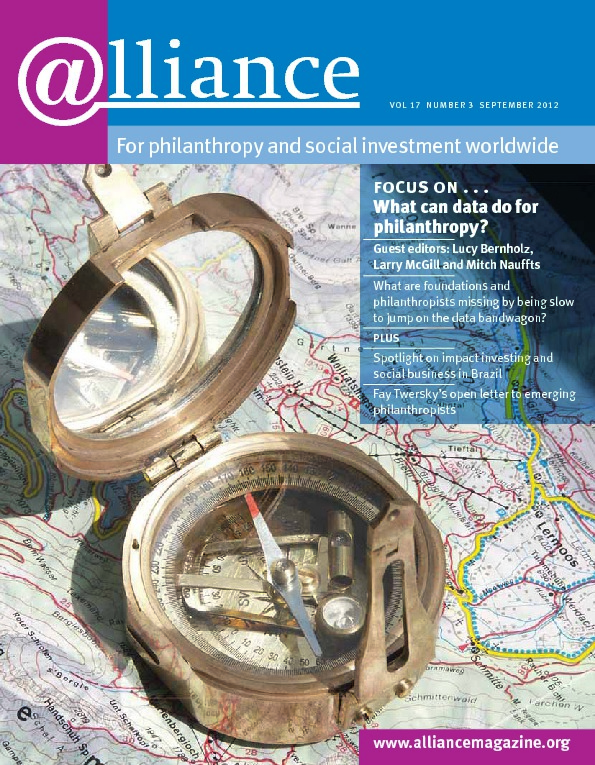 Adrian Hornsby’s The Good Analyst sets itself an ambitious goal. The book gives the background to current discussions of social impact assessment and lays out the methodology that Investing for Good uses to analyse organizations seeking investment. It then offers guidance to organizations wishing to embark on their own journey of social impact analysis.
Adrian Hornsby’s The Good Analyst sets itself an ambitious goal. The book gives the background to current discussions of social impact assessment and lays out the methodology that Investing for Good uses to analyse organizations seeking investment. It then offers guidance to organizations wishing to embark on their own journey of social impact analysis.
The book outlines some of the key issues on impact, notably the balancing act between the use of quantitative ‘hard’ data and that of ‘soft’ outcomes. The Good Analyst will interest all those with a stake in social impact and social investment.
Part I gives a brief history of social impact measurement. Hornsby describes how a tradition of monitoring and evaluation has been pushed up the agenda by the need to prove value for money, making impact assessment increasingly central to the work of social-purpose organizations. He argues that technology, and particularly the internet, has created an expectation from beneficiaries and stakeholders – as well as the wider public – of access to raw data and proof of efficacy.
Another reason given for this interest in impact is a shift in the relationship between funders and charities towards something that resembles a purchasing contract, where social outcomes are in effect being bought by donors. This, says Hornsby, creates a need to establish the outcomes that a charity will deliver, and to measure if these have been achieved after a given intervention.
Although there is a trend towards awarding grants on the basis of social impact funding, contracts and reporting requirements vary enormously. Purchasing-style contracts of the kind Hornsby describes are still only a small minority, in SIAA’s experience. Perhaps Investing for Good’s closeness to the social investment sector, whose terms of business are closer to those of the private sector, accounts for this view.
Part II delves into Investing for Good’s Methodology for Impact Assessment and Analysis (MIAA). This section will appeal to impact practitioners comfortable with the minutiae of impact analysis. The methodology looks at three key areas for each organization being examined: whether it fulfils its stated mission, whether it includes a beneficiary perspective, and what its wider impact is.
While the considerable detail of the MIAA will be useful to an evaluation professional, Hornsby himself concedes this makes it somewhat dry to read. Real-life examples of how it has been put to use in different organizations would have helped make this section more accessible.
In the final part of the book, Hornsby turns to more general guidelines for organizations designing frameworks with which to measure and analyse their own social impact. This section looks at who assessments are geared towards (the organizations themselves, funders and investors, beneficiaries and staff, or the wider third sector). He also discusses the various stages involved in any impact assessment: defining your mission, mapping your activities and measuring your impact, beneficiary involvement, using and communicating results. It’s encouraging to see the equal emphasis Hornsby places on communicating results and using them to improve the organization’s own work. This counters a widespread tendency for organizations to become caught up in the challenges of measuring their impact while neglecting to plan for how they use the information they work so hard to collect.
The Good Analyst captures the current debate around impact – and its roots – well. Hornsby’s sharing of the organization’s methodology also contributes to our knowledge of social impact analysis and is to be applauded. The book tackles some difficult issues, such as when quantitative approaches (eg cost-benefit analyses) are appropriate and how to capture the more qualitative aspects of charity work. It also considers the intrinsic value of the risky, innovative work that some charities undertake – for instance with hard-to-reach groups where positive outcomes are difficult to achieve.
James O’Sullivan is SIAA (Social Impact Analysts Association) membership officer. Email james.osullivan@siaassociation.org
To order
http://www.investingforgood.co.uk
The Good Analyst: Impact measurement & analysis in the social-purpose universe
Adrian Hornsby Investing for Good £7.99/free PDF
ISBN 9780957160309





Comments (0)